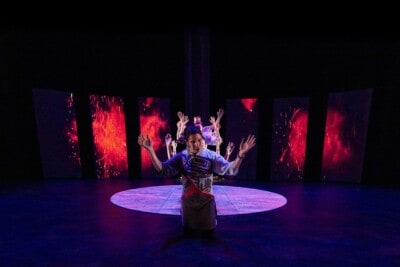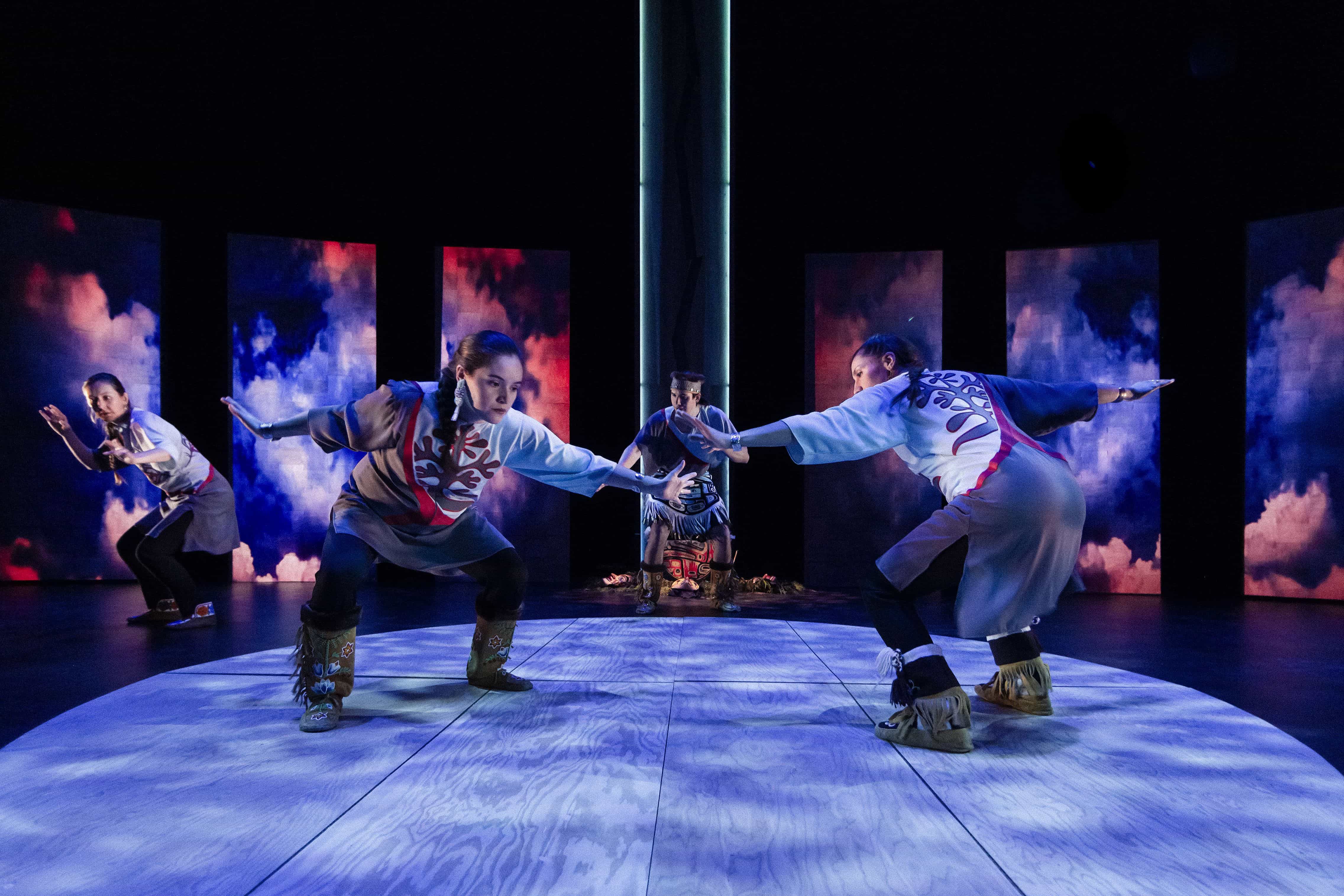This October, DanceWorks presents Mînowin, a stunning new multimedia work by Dancers of Damelahamid, a celebrated Indigenous dance company from the Northwest Coast of British Columbia.
Choreographed by Margaret Grenier, Mînowin integrates narrative, movement, song, performance, and multimedia design, connecting to landscapes from contemporary perspectives of customary Indigenous dance forms. We chatted with Margaret about the work this week.
SDTC: Walk us through a typical (work) day in your life, from getting up until going to bed.
MG: I live a short ferry ride outside of Vancouver on the Sunshine Coast; therefore, a typical day involves catching a very early ferry and spending time at our office on the Squamish ancestral lands and either taking time each afternoon with training or residency and creation work. Sometimes I get to work on regalia and I work on language with Betsy Lomax whenever possible, although regalia and language do not take place in a regular day. I also try to spend time with my children and grandchildren and family when I can.
What are the themes that weave through Mînowin?
Mînowin is about the moments when we come to a place of transformation or renewal. Throughout our stories, both old and new, there are times of great loss or imbalance and from these places we find a way forward. In the piece, we explored what this means when interpreting our origin stories and also what it means in the current context. It also is a piece that speaks from a very personal place as it is through our personal narratives that we can contribute to the complex and diverse stories that weave together our identities as Indigenous peoples.
What was your process for developing the choreography?
We worked with Elders Lawrence Trottier in looking at Cree song and story and also with Elder Betsy Lomax in working with Gitxsan lyrics and language translations and David Boxley in Coastal design. We also worked with Charles Koroneho in developing the themes and connecting the elements of the vision for Mînowin. Story is the essential starting place and all elements are developed along side of one another including choreography, visual design and new media elements, regalia and masks, song and music composition. We worked with collaborators Andy Moro and Sammy Chien on developing the media elements that are intended to support the story telling and connect movement to the visual design. All of these elements inform one another and the piece is created. We then worked with Peter Espiritu to refine and clarify what had become Mînowin.

What does Mînowin mean to you personally?
Mînowin is for me the medicine of dance. It is the shift in ourselves when we move from loss to healing. It is the hard work and the determination to transform hurt into love. For me it speaks to the times in our lives when we feel that we have to push ourselves beyond our limits and in doing so we find a way to bring balance back into our lives.
What do you hope audiences take away from this performance?
I hope that audiences have the opportunity to receive the gift that is offered from our family and our story. We are sharing our own process in order to give insight into what it looks like and for the audience to witness the work that comes from our parents and grandparents who trained us and laid the foundation of this story.
Mînowin comes to Harbourfront Centre Theatre from October 18-19. Grab tickets here.




 Follow Us On Instagram
Follow Us On Instagram
